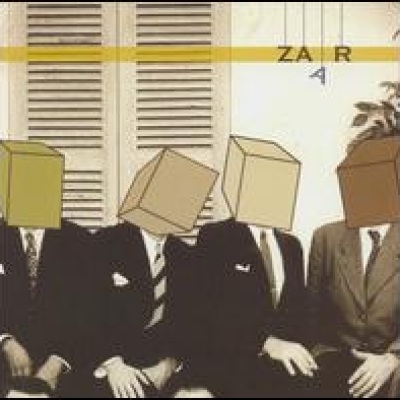
ZAAR
by Bill TillandThis French prog rock quartet, rising out of the ashes of Sotos, is built around brothers Yan Hazera and Michael Hazera on lead guitar and drums, respectively. The single-named Pairbon replaces Sotos' bassist, Bruno Camide; the cello and violin from the earlier group are replaced by a hurdy-gurdy played by Cosia (another single-named musician). Historically, the legacy of Magma has lain heavily on most French instrumental prog rock groups, but the Hazera brothers lighten up Magma's relentless, apocalyptic zeuhl sound with lots more space and some short acoustic pieces that demonstrate a refreshing willingness to move outside conventional prog rock boundaries. There are parallels here to Univers Zero's best work, especially on "Scherzo # C," where shifting time signatures and dissonant contrapuntal riffs create a challenging type of chamber rock. The two long pieces on the CD provide plenty of scope for drama, but both "Sefir" and "Omk" utilize a number of quiet interludes to both ratchet down the intensity and create expectations for what follows. As a result, the "payoff" becomes not the shrieking climax but, rather, all the adventures along the way. Cosia's use of the hurdy-gurdy is particularly creative on the opening piece. Although this instrument has folk and even medieval classical roots, the hurdy-gurdy on this CD seems to be subjected to various electronic treatments and some "outside" playing that occasionally suggests a small animal in distress. Indeed, Cosia's first solos almost seem to be generated by a Moog synthesizer or electronic oscillator, although he also displays the instrument's ability to produce bagpipe-like drones and later shows off its violin timbres (in essence, the hurdy-gurdy is a mechanical violin). It's hard to believe that all these sounds are generated by a single instrument (even a really strange one), although nothing on the CD cover or liner notes indicates otherwise. Overdubbing is a distinct possibility, of course -- and with all the contemporary devices available for a guitar to plug into, Yan Hazera could also be responsible for some of those mystery sounds. The second long piece, "Omk," reverses the roles initially, with Hazera soloing and Cosia providing the backing drone, but then Cosia takes over again with a moody solo that hovers between scraping violin and wheezy pump organ. Both long pieces also showcase the excellent staccato attack of drummer Michael Hazera, whose work can move beyond simple (or even complex) timekeeping and into improvisational territory that owes more to jazz than rock. This is a very sophisticated recording that deserves a wide audience.
